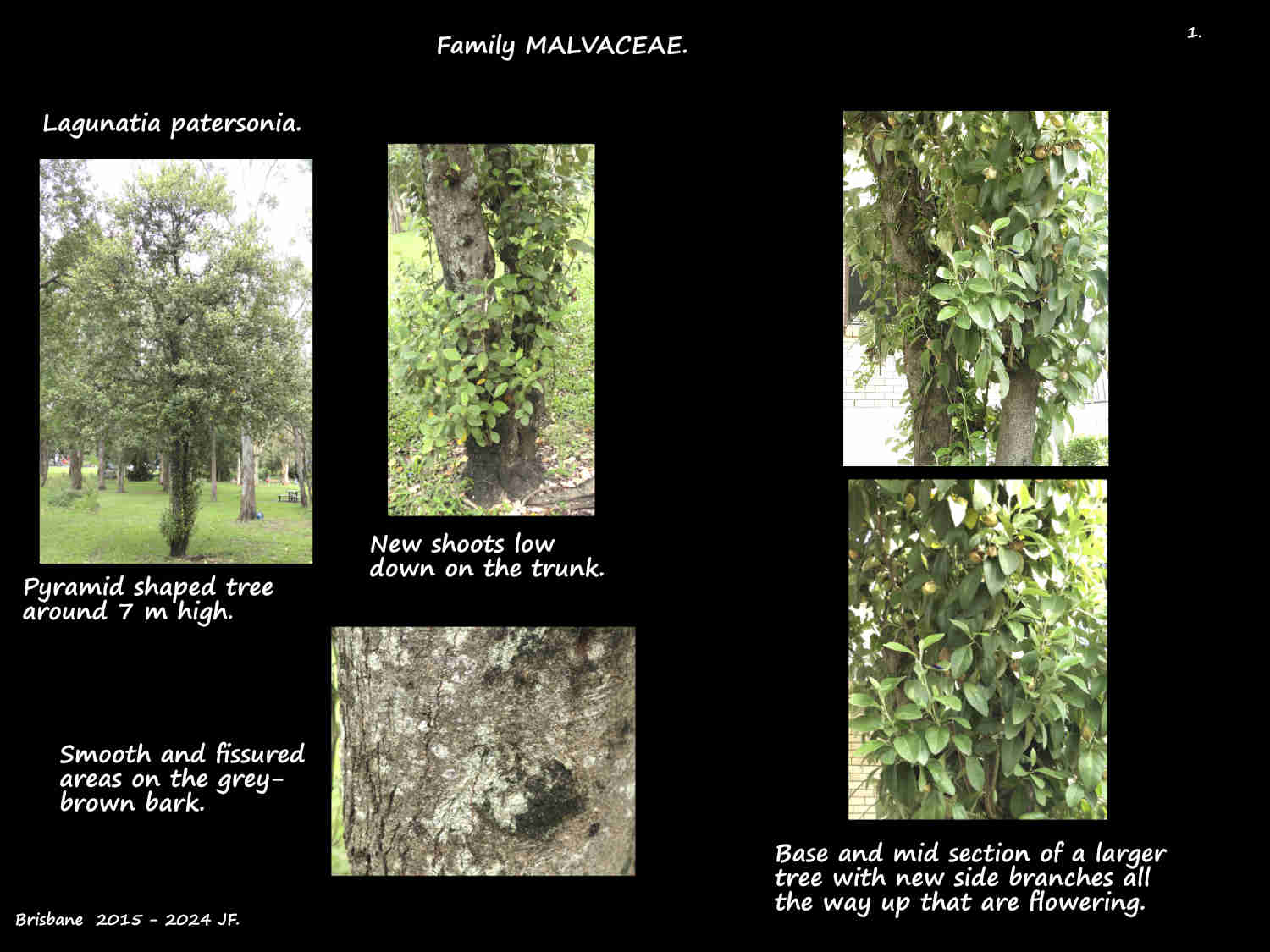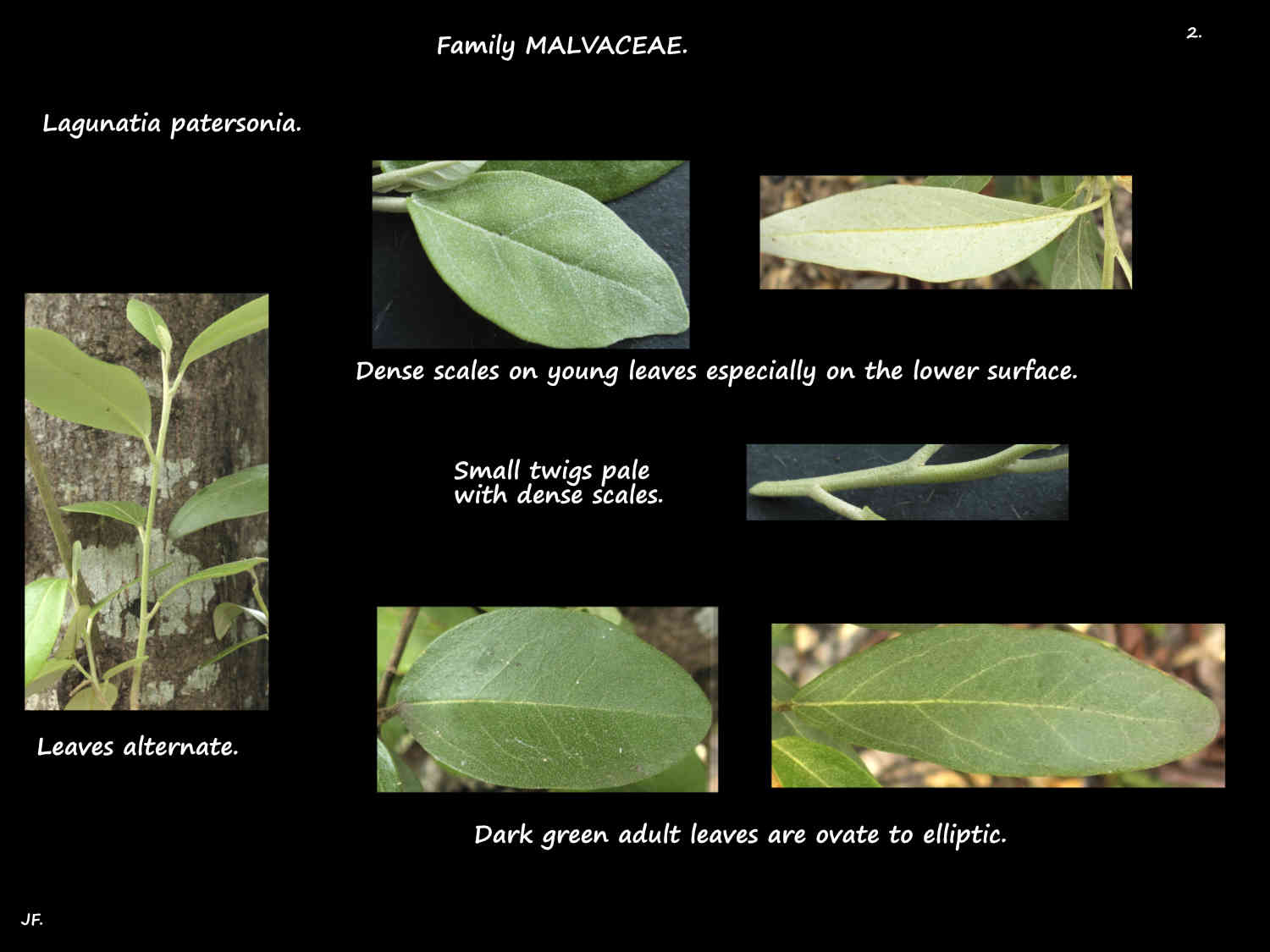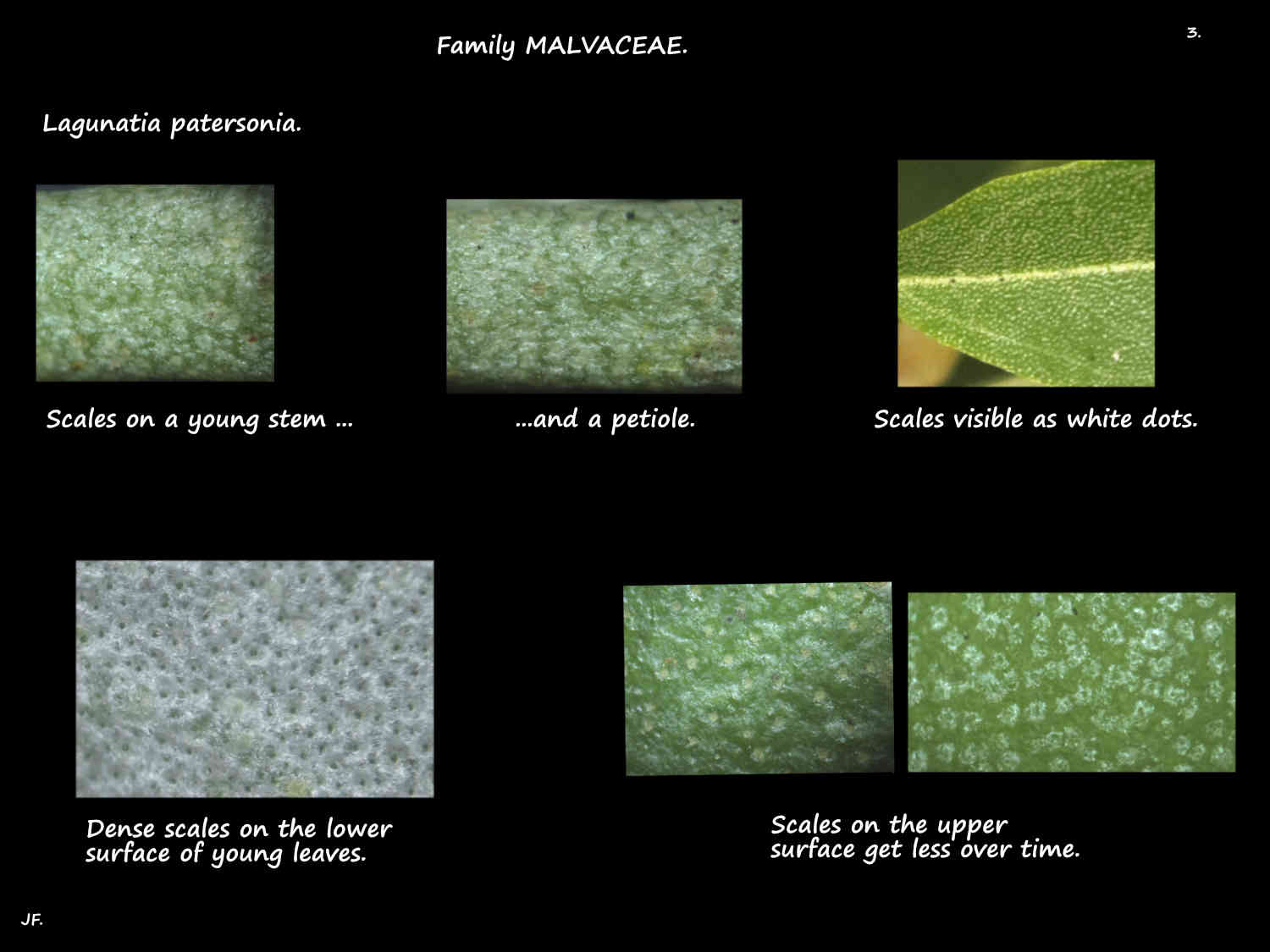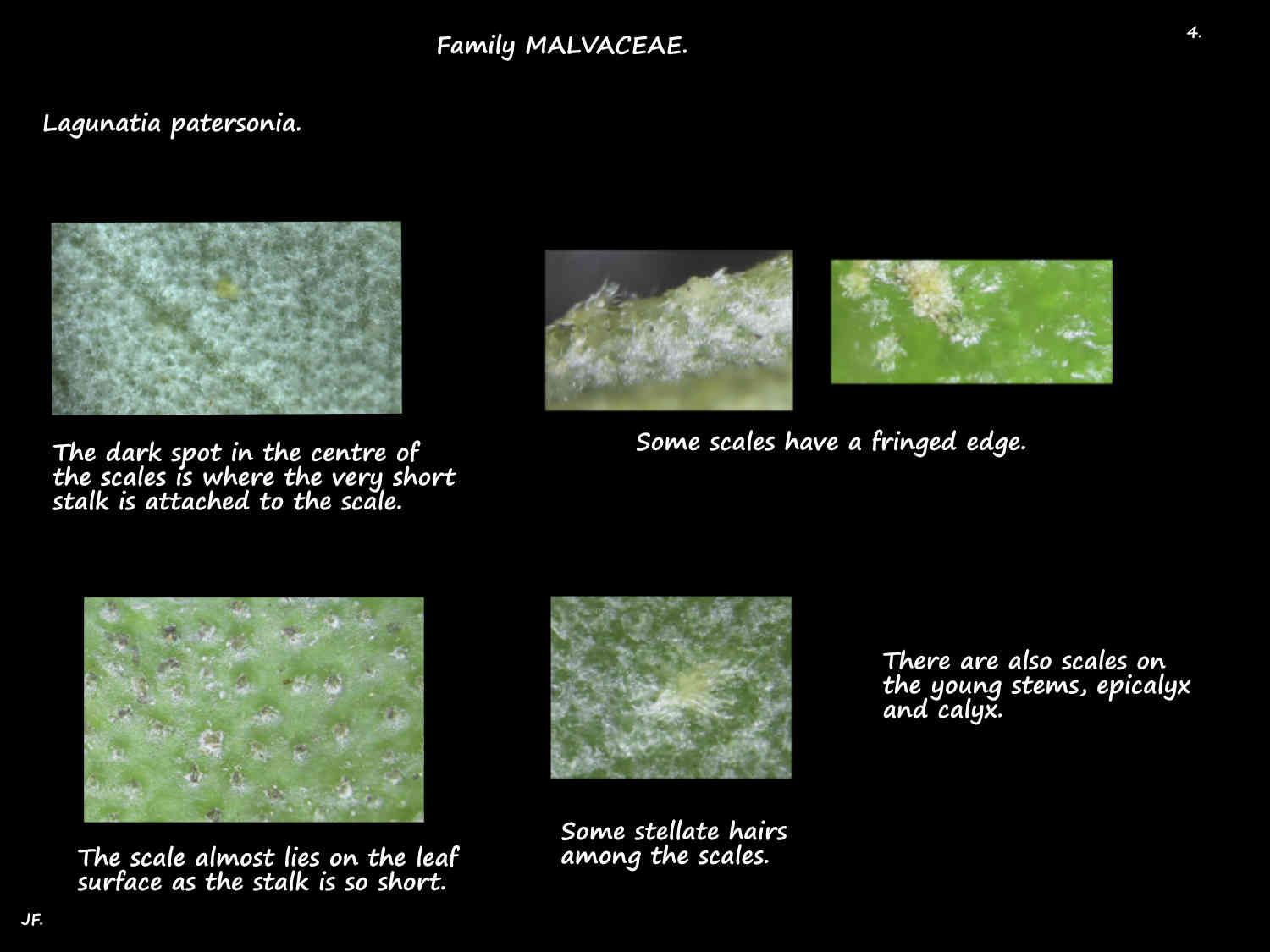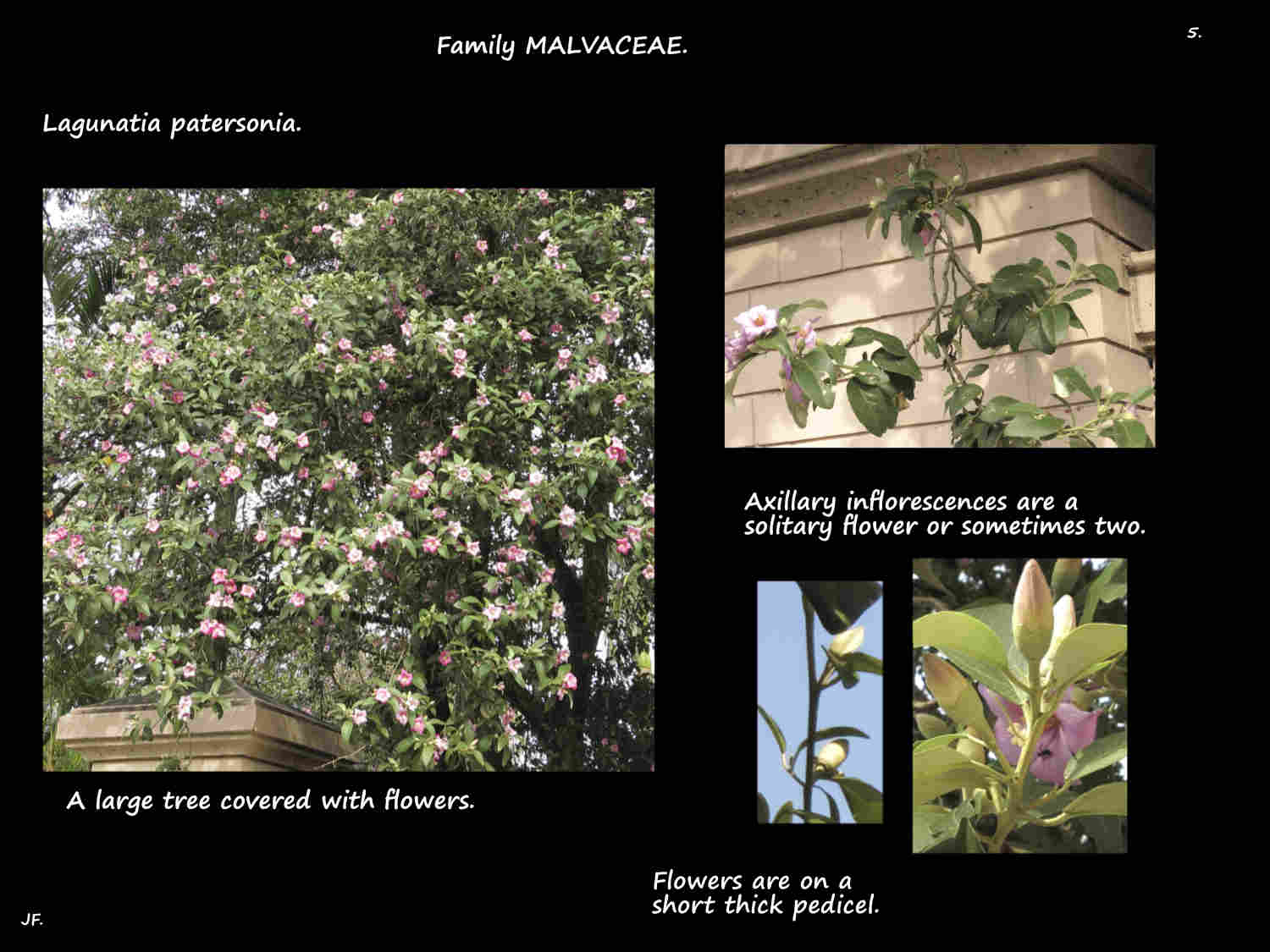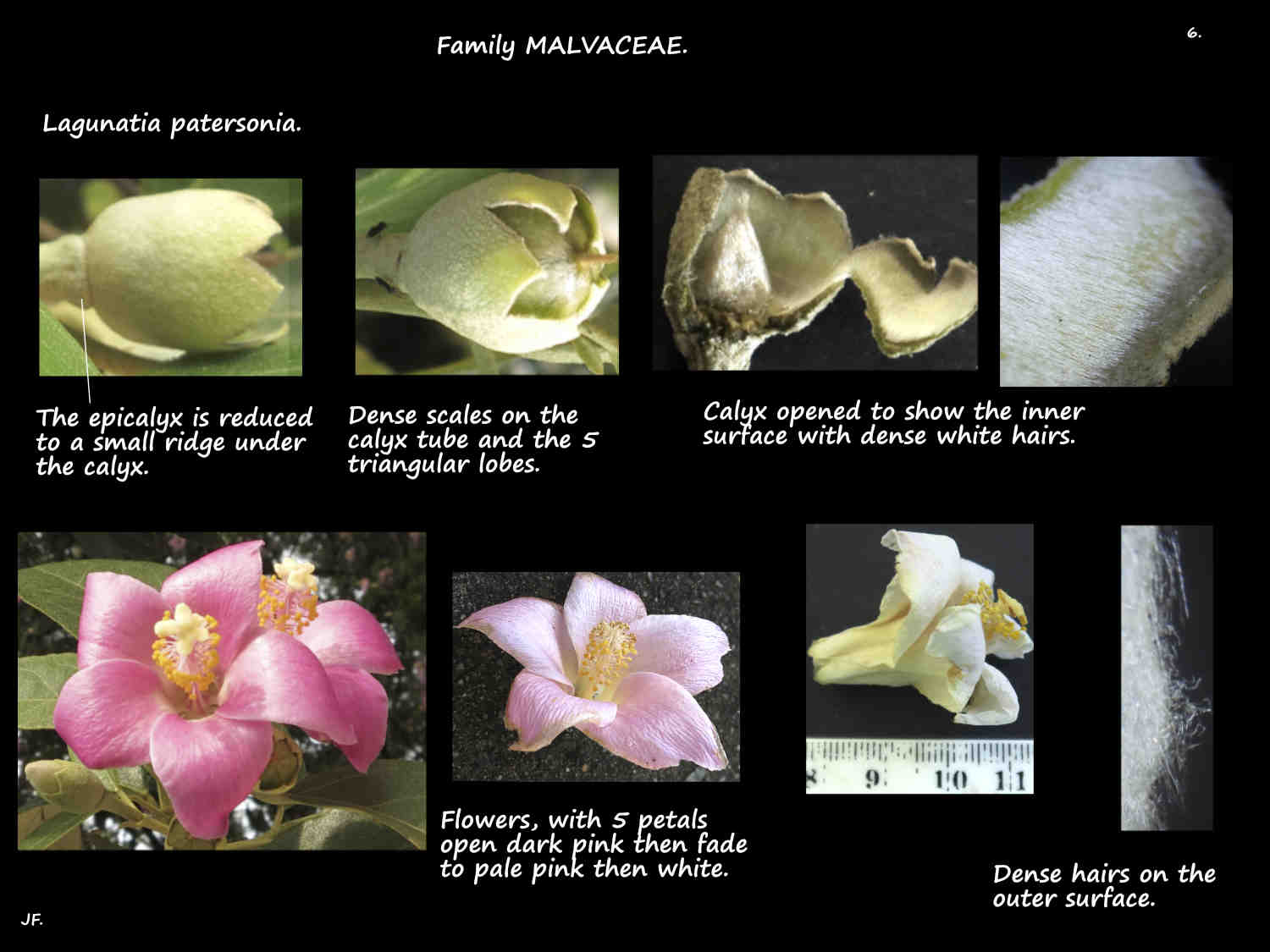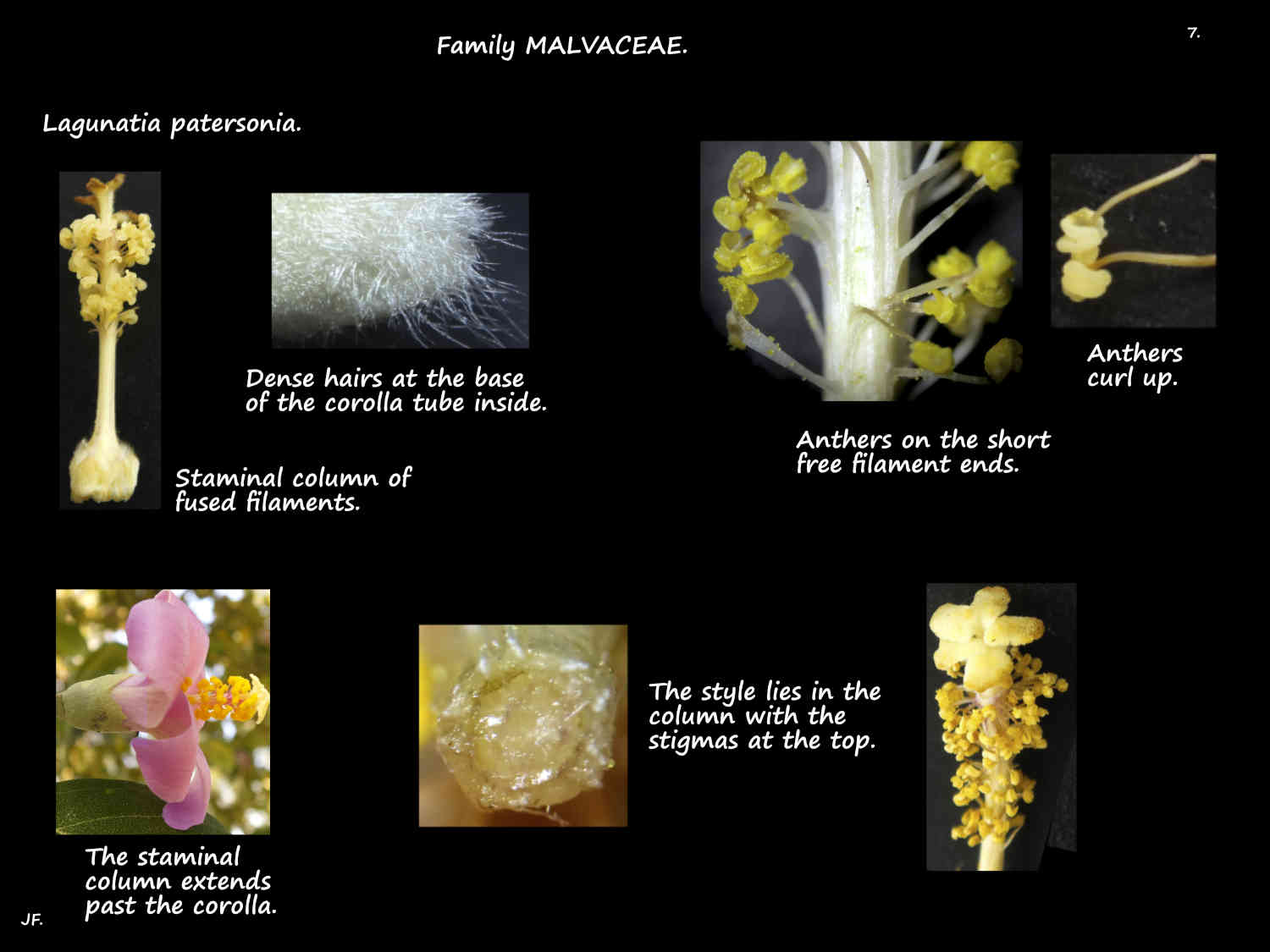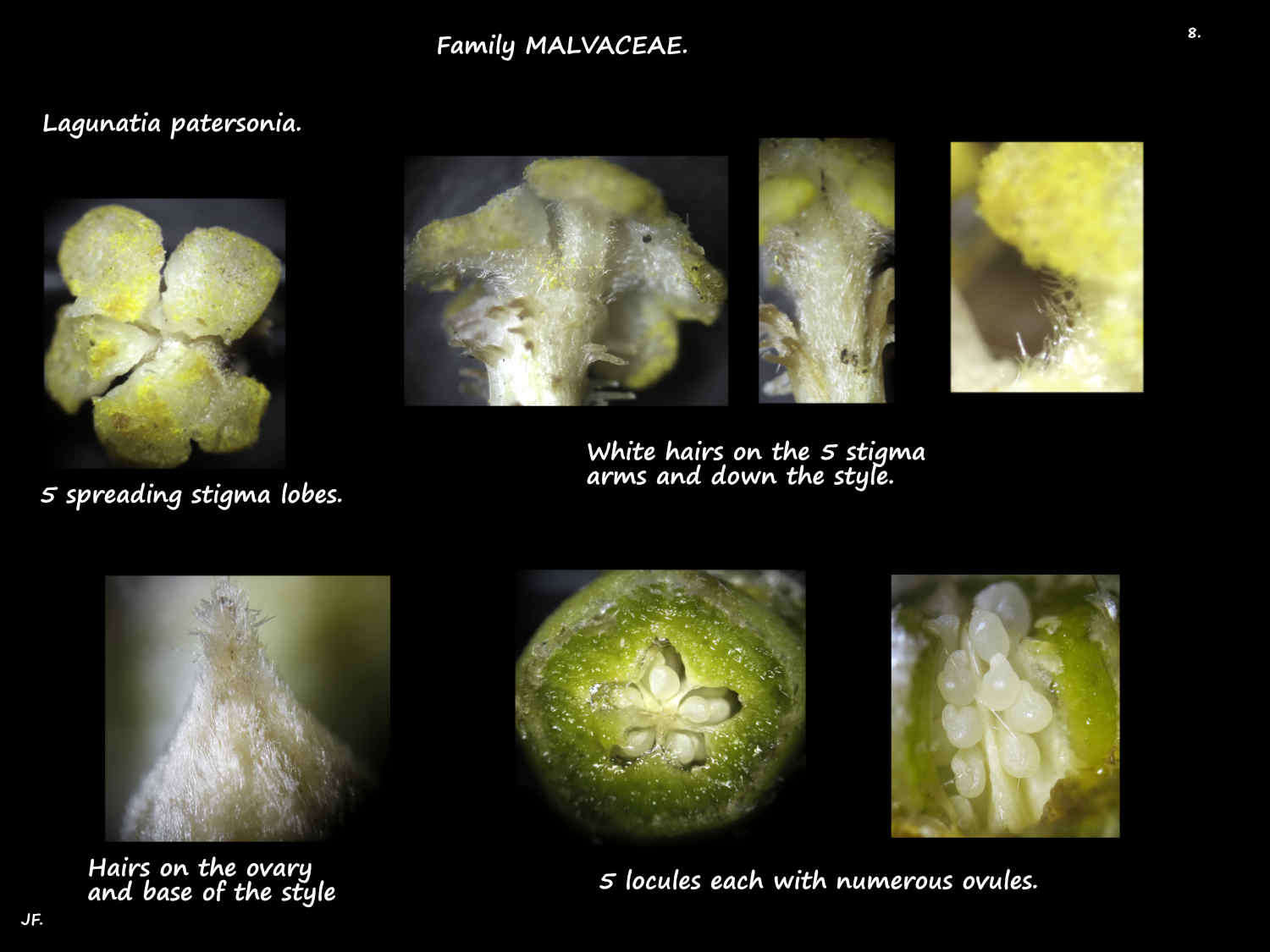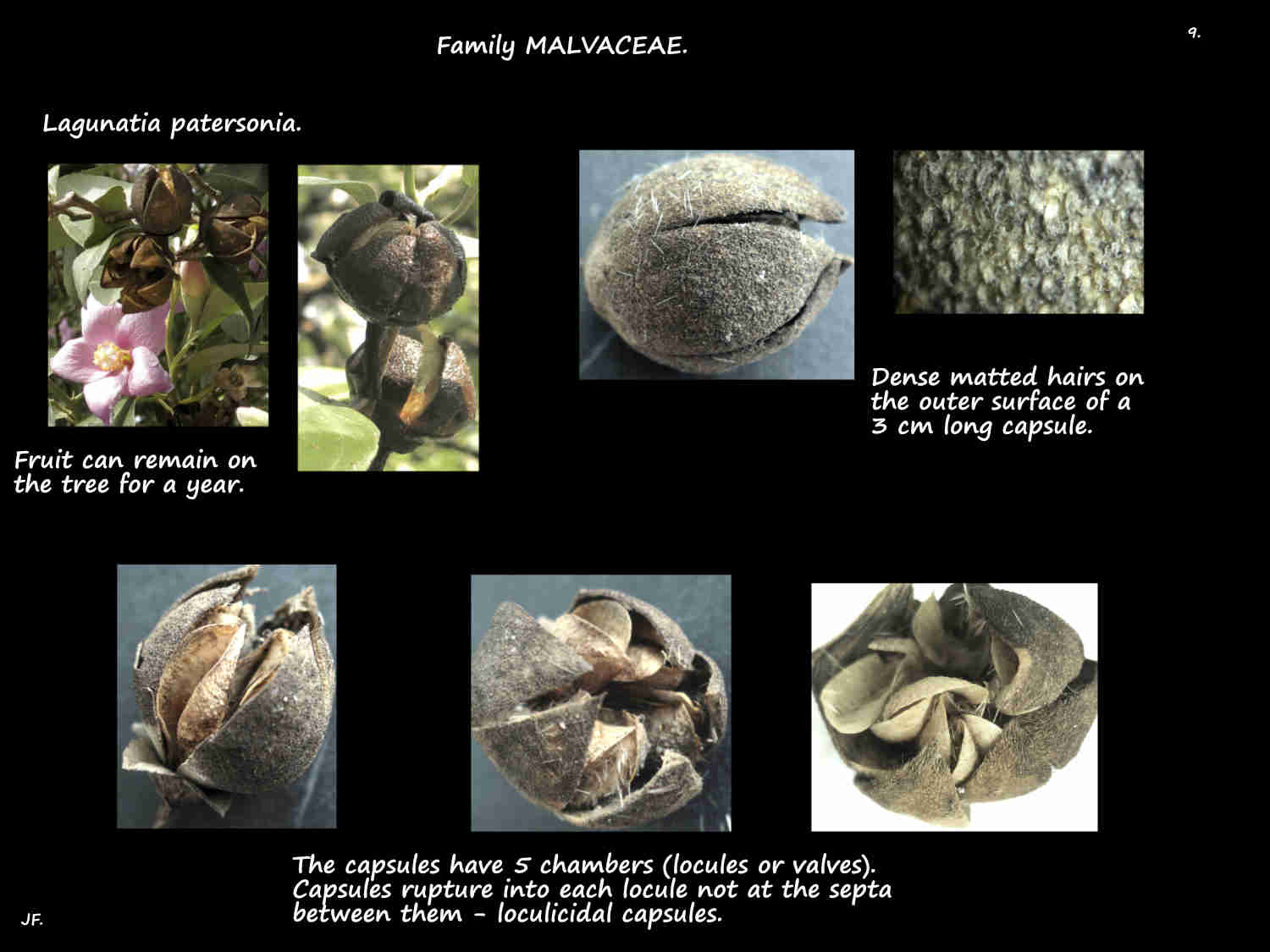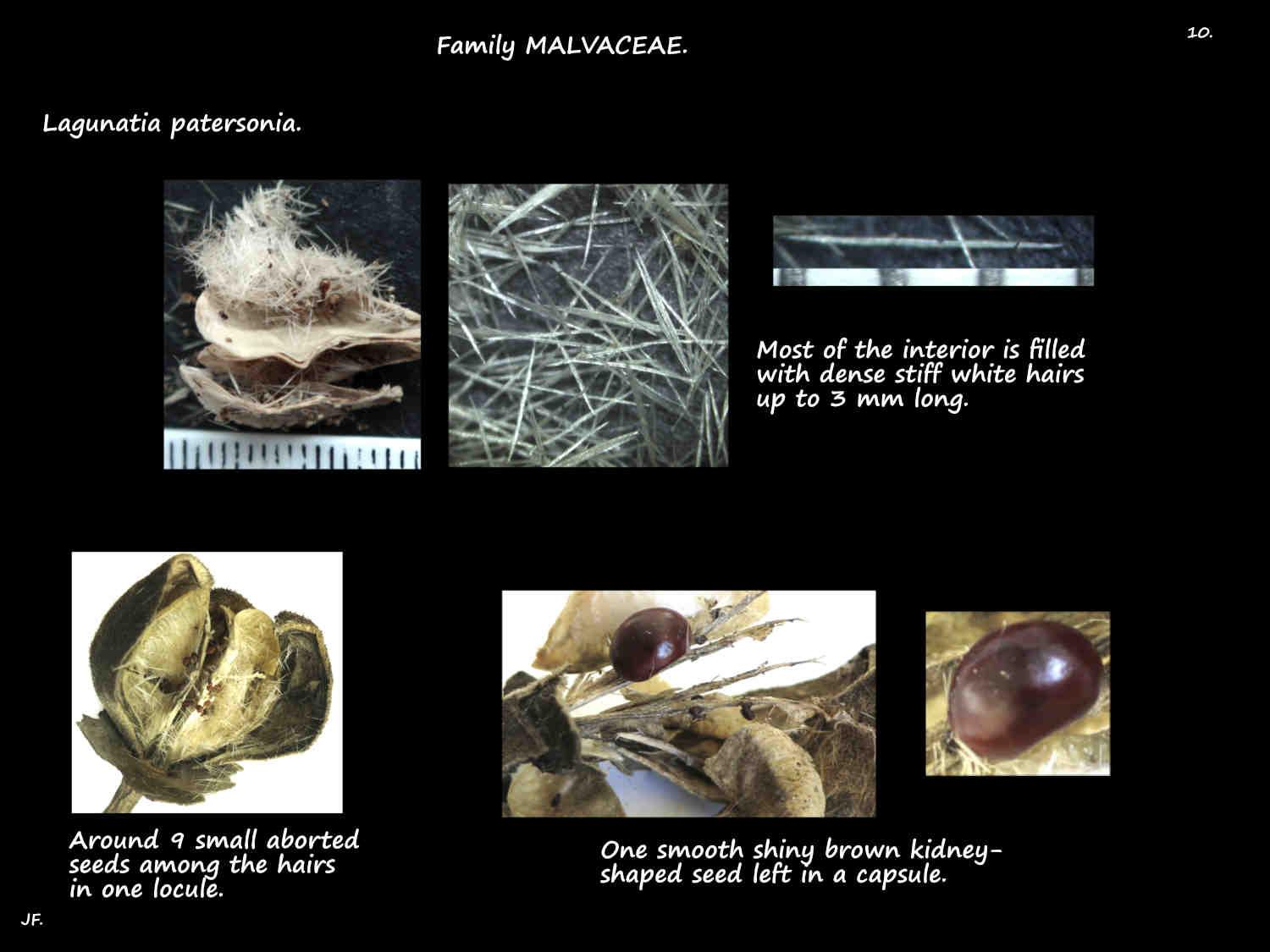Lagunaria patersonia.
Norfolk Island hibiscus, native to Norfolk and Lord Howe islands is commonly cultivated.
Trees from 10 to 15 (20) m high are often pyramidal or narrow.
Branches usually start low down on the trunk.
The dark grey bark may develop small fissures.
Young twigs (and other parts) have dense scales and hairs.
The evergreen alternate leaves are on a petiole up to 3 cm long.
Leaves, up to around 10 cm long and 5 cm wide are elliptic, ovate or lanceolate.
The grey-green blade has a rounded tip and a smooth edge.
Young leaves have dense scales especially underneath.
Axillary inflorescences are 1 (2) flower on a thick pedicel 1 to 2 cm long.
The epicalyx is just a ridge at the base of the calyx.
The calyx, 1.5 cm long has a cup-like base with 5 short triangular lobes.
There are dense scales on the outer surface and hairs on the inner.
The corolla, up to 4.5 cm long has 5 (3 or 4) elliptic petals with dense hairs on the outer surface.
Flowers open a deep pink to mauve than fade to pale pink then white.
There are cultivars with deeper colours.
The stamen filaments are fused for most of their length into a staminal column.
This has the anthers, on short filaments along most of its length.
The top of the column has 3 to 5 white teeth.
The superior ovary has 5 locules with numerous ovules in each.
The hairy style runs through the staminal column.
The top of the staminal column and the 5 stigma lobes extend past the corolla.
The fruit are a roughly spherical loculicidal capsule around 3 cm long.
Capsules stay on the tree for months after the seeds have been released.
The grey-brown capsules have 5 chambers or valves.
There are dense hairs on the outer surface and inside are long, stiff white irritating hairs.
The smooth orange-red to reddish-brown kidney-shaped seeds are around 6 mm long.
The native Lagunaria queenslandica has flowers with shorter petals, a longer style and the epicalyx falls early.
J.F.

